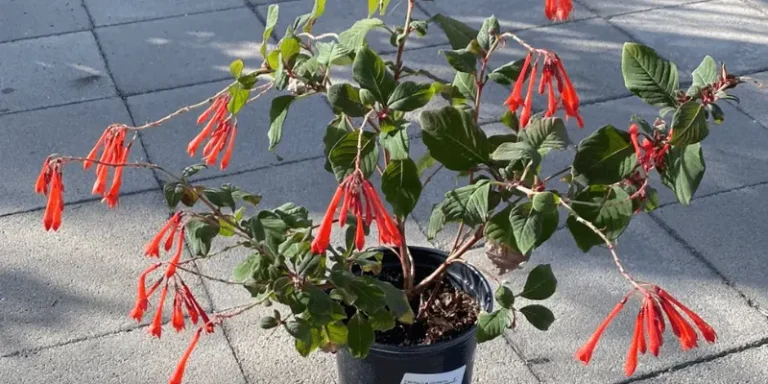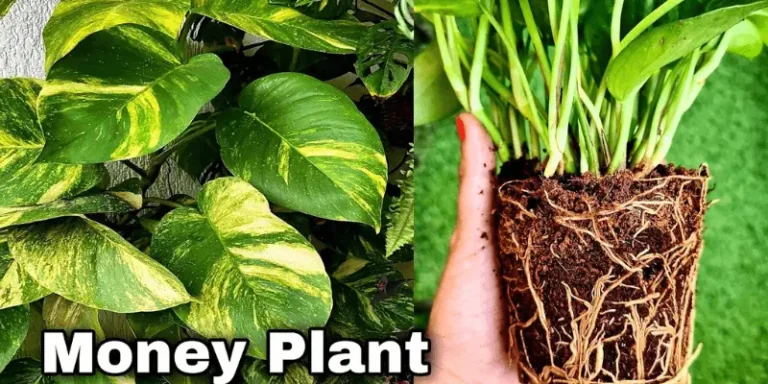Plumeria Plant Indoor Growth & Propagation | Plumeria Flower Care

Plumeria, with its enchanting and fragrant flowers, is a tropical gem that many gardening enthusiasts aspire to cultivate indoors. Whether you’re a novice or an experienced gardener, this comprehensive guide is designed to help you achieve successful indoor growth and propagation of Plumeria plants while providing valuable tips for their care.
Unlocking Plumeria Indoor Growth Potential
Indoor cultivation of Plumeria, often referred to as the “lei flower” due to its use in Hawaiian leis, offers a unique opportunity to enjoy its vibrant blooms year-round. Let’s delve into the key aspects of successful Plumeria indoor growth:

Optimal Sunlight Exposure
Plumeria plants adore sunlight. Choose a sunny spot near a south or west-facing window where they can bask in the sun’s glory for at least 6-8 hours each day. Adequate sunlight is the key to robust growth and abundant blooms.
Well-draining Soil Mix
Ensure your Plumeria is potted in well-draining soil to prevent waterlogged roots. A mix of potting soil, perlite, and sand provides the perfect blend to keep your plant’s feet dry while allowing it to absorb essential nutrients.
Balancing Act: Watering
frangipani prefers to dry out between waterings. Water your plant thoroughly, but allow the top inch of soil to dry before the next watering. In winter, reduce watering to mimic its natural dormancy period.
Feeding the Beauty
Feed your indoor frangipani with a balanced, water-soluble fertilizer during the growing season (spring to early autumn). This ensures it gets the nutrients it needs for healthy foliage and flower production.
Pruning for Shape and Size
Pruning is both an art and a science when it comes to frangipani. Regularly prune to shape your plant and remove dead or leggy growth. This encourages branching and a fuller appearance.
Propagation: Expanding Your Plumeria Collection

If you wish to multiply your Plumeria plants, propagation can be a rewarding endeavor. Here are some methods to consider:
Stem Cuttings:
- Take healthy stem cuttings from a mature Plumeria plant.
- Allow the cuttings to air dry for a few days to form calluses.
- Plant them in well-draining soil, and with time, they’ll root and grow into new frangipani plants.
Grafting:
- Grafting involves joining a frangipani cutting (scion) onto the rootstock of another Plumeria plant.
- This method allows you to combine the desired traits of different frangipani varieties.
Growing Plumeria from Seeds: Cultivating Unique Varieties
Growing frangipani from seeds can be a gratifying experience, offering the opportunity to nurture unique and genetically diverse frangipani varieties. Here’s a step-by-step guide to successfully start your frangipani journey from seeds:

Seed Collection:
- Harvest Plumeria seeds from mature pods. These pods are typically found on the parent plant after successful pollination. Wait until the pods turn brown and start to crack open naturally.
Seed Preparation:
- Once you have collected the seeds, gently remove them from the pods. Plumeria seeds are equipped with a tuft of silky hairs that aid in their dispersal, so handle them with care.
Seed Scarification:
- frangipani seeds have a hard outer coat that can inhibit germination. To help the seeds germinate more easily, scarify them by gently nicking or sanding the outer coat without damaging the inner embryo.
Soaking:
- Soak the scarified seeds in warm water for 24 to 48 hours. This softens the seeds and initiates the germination process.
Selecting a Pot and Soil:
- Choose a small pot with drainage holes and fill it with a well-draining potting mix. A mix of potting soil, perlite, and sand works well.
Planting the Seeds:
- Plant the scarified seeds about half an inch deep in the prepared potting mix. Space them apart to allow for individual growth.
Maintain Moisture and Warmth:
- Keep the soil consistently moist but not waterlogged. Placing a plastic cover or a plastic bag over the pot can help maintain humidity and warmth, which aids germination.
Provide Indirect Light:
- Place the pot in a location with indirect sunlight. Avoid exposing the seeds to harsh, direct sunlight, which can be detrimental during the early stages of growth.
Germination and Transplanting:
- frangipani seeds typically take anywhere from a few weeks to a few months to germinate. Once they have grown into sturdy seedlings with several sets of leaves, they can be transplanted into individual pots or the garden.
Careful Transplanting: – When transplanting, be gentle with the young frangipani seedlings, ensuring you do not damage the delicate roots. Use well-draining soil in the new pots or planting locations.
Continued Care: – Continue to care for your frangipani seedlings with regular watering, proper fertilization, and protection from cold temperatures during their first year of growth.
Growing frangipani from seeds may take time and patience, but the reward lies in the chance to cultivate unique and diverse Plumeria varieties that carry the potential for stunning blooms and fragrances. Enjoy the journey of nurturing these tropical gems from the very beginning
Maintaining Your Indoor frangipani Paradise
By following these tips for indoor frangipani growth and propagation, you can create a tropical paradise right in your home. With patience and care, you’ll be rewarded with the sight and scent of these stunning blooms, making your indoor space truly enchanting.
So, whether you’re nurturing a single Plumeria or expanding your collection through propagation, remember that the journey is as beautiful as the destination when it comes to growing and caring for these remarkable tropical plants.
Plumeria Flower Care
Plumeria flowers, with their vibrant colors and enchanting fragrance, are a sight to behold. To keep these tropical beauties thriving and blooming to their full potential, proper care is essential. In this guide, we’ll share valuable tips for nurturing your Plumeria flowers, ensuring they grace your garden or indoor space with their splendor.

Understanding Plumeria Flowers:
Before we delve into care tips, let’s take a moment to appreciate the unique characteristics of Plumeria flowers:
Diversity of Colors:
- frangipani flowers come in a wide range of colors, including white, yellow, pink, red, and various combinations. Each color variation adds its own charm to your garden or floral arrangements.
Fragrance Delight:
- frangipani flowers are renowned for their captivating fragrance, which is often described as sweet, fruity, or tropical. The scent can vary between different Plumeria varieties.
Seasonal Blooms:
- frangipani typically produces flowers during its active growing season, which varies by region but generally occurs from spring to early autumn.
Now, let’s explore essential care tips to help your frangipani flowers flourish:
Sunlight Exposure:
- frangipani flowers thrive in full sun. Ensure they receive at least 6-8 hours of direct sunlight each day. Plant them in a sunny spot in your garden or place potted Plumeria near a south or west-facing window if grown indoors.
Well-Draining Soil:
- Plumeria prefers well-draining soil. Use a mix of potting soil, perlite, and sand to promote good drainage. This prevents waterlogged roots, which can be detrimental to your plants.
Watering Routine:
- Water yourfrangipanideeply but allow the top inch of soil to dry out between waterings. During the active growing season, which varies by region, water more frequently and reduce watering during the dormant season.
Fertilization Strategy:
- Feed your frangipani with a balanced, water-soluble fertilizer during the growing season. A fertilizer with a 1:1:1 NPK ratio provides the necessary nutrients for robust flowering and healthy growth.
Pruning for Enhanced Blooms:
- Regularly prune your frangipani to encourage branching and remove spent flower clusters. Pruning can lead to a more compact shape and increased flower production.
Pest and Disease Management:
- Keep an eye out for common pests like aphids and mealybugs. Apply neem oil or insecticidal soap if infestations occur. Additionally, ensure good air circulation to prevent fungal diseases.
Protect from Cold Temperatures:
- Plumeria is sensitive to cold temperatures. If you’re in a region with colder winters, consider moving potted frangipani indoors during the winter months or providing protection from frost.
Enjoy Regular Blooms:
- With proper care, frangipani can bloom repeatedly throughout the growing season. Regularly deadhead spent flowers to encourage the plant to produce new blooms.
Prized Fragrance:
- Take time to savor the fragrance of your frangipani flowers, especially during warm summer evenings when their scent is most pronounced. It’s one of the joys of nurturing these remarkable blooms.
By following these care tips, you’ll be well on your way to cultivating healthy and abundant Plumeria flowers, creating a garden or indoor space filled with the beauty and fragrance of these tropical treasures. With dedication and a little TLC, your frangipani plants will reward you with their captivating blooms year after year.



